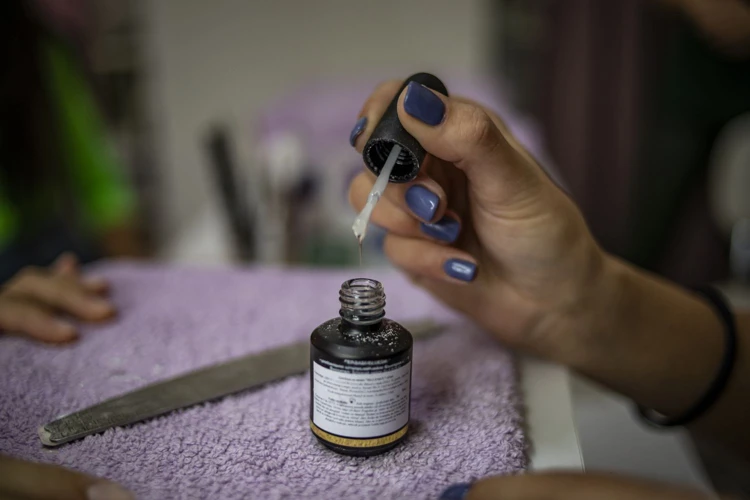For fashion enthusiasts and beauty aficionados, artificial nails are a staple for a polished look. However, when it’s time for a new set or a return to natural nails, the removal process can be daunting. The adhesive that keeps these enhancements secure is notoriously stubborn. Understanding the best practices for breaking down nail glue is not only crucial for maintaining the health of your natural nails but also for ensuring a pain-free transition.
Understanding Nail Glue
Nail glue is a powerful adhesive, often made from cyanoacrylate, a quick-bonding and durable chemical. It’s designed to keep false nails, nail tips, and nail decorations securely attached to your natural nails. Because of its strength, finding a safe and effective method to dissolve nail glue is essential.
Why Safe Nail Glue Removal is Important
Removing nail glue in a haphazard manner can damage the nail bed, lead to infections, or cause undue stress to the cuticles. Therefore, safe nail glue removal should always be a priority to protect your nails and skin from harm and maintain their integrity.
DIY Nail Glue Remover Techniques
Let’s explore several do-it-yourself methods for nail glue removal that don’t require a trip to the salon. These techniques can be performed with household items, making them convenient and cost-effective.
Non-Acetone Nail Glue Removal Methods
If you’re looking for a gentle way to remove nail glue, non-acetone methods are a go-to choice. Non-acetone nail glue removal can be less harsh on the skin and nails, though it may require more patience and time. Soaking your nails in warm soapy water or using nail polish remover that is acetone-free are potential options.
Homemade Nail Glue Solvent Recipes
- Oil and Vinegar Mix: Combine equal parts of vinegar and a soothing oil like olive or coconut oil. Apply the mixture to your nails, leave it on for a few minutes, and gently rub the nails to help loosen the glue.
- Alcohol-based Solution: Rubbing alcohol can also break down the bond of nail glue. Apply it with a cotton ball and let it soak in before gently peeling the glue away.
Using Acetone for Nail Glue Removal
Acetone is a powerful solvent that can effectively dissolve nail glue. Despite its strength, it can be used safely with the right precautions.
How to Safely Use Acetone to Dissolve Nail Glue
When opting for acetone for nail glue removal, ensure you’re working in a well-ventilated area. Protect your skin by applying petroleum jelly on the skin surrounding your nails to prevent dryness and irritation.
Steps for Acetone Soaking Method
- Preparation: Gather a bowl, acetone, petroleum jelly, and a nail file.
- Protect Skin: Apply petroleum jelly around your nails.
- File the Surface: Gently file the top layer of the nail glue to allow the acetone to penetrate more effectively.
- Soak: Soak your nails in a bowl of acetone for 10-15 minutes.
- Removal: Gently scrape off the softened glue with a wooden stick.
- Aftercare: Wash your hands and moisturize thoroughly.
Breaking Down Nail Glue Without Harsh Chemicals
For those who prefer to steer clear of harsh chemicals, there are alternative methods to remove nail glue that employ more natural substances.
Warm Water and Oil Soak
One of the most skin-friendly methods involves a warm water and oil soak. Fill a bowl with warm water, add a few drops of your favorite oil, and soak your nails for 20-30 minutes. The combination of warmth and oil helps to weaken the glue, allowing for easier removal.
Alternative Methods to Remove Nail Glue
Besides the oil and water method, other natural remedies include using lemon juice or a mixture of baking soda and coconut oil to gently buff away the adhesive. These methods may be gentler on your nails and are worth trying if you have sensitivities to stronger solvents.
Nail Glue Removal Tips and Tricks
There are several strategies to enhance the efficacy of nail glue removal while ensuring the process goes smoothly.
Proper Application for Easier Removal
To facilitate easier removal later on, apply nail glue sparingly and avoid getting it on your skin. Using less glue not only makes future removal less tedious but also reduces the chances of damage to your natural nails.
Caring for Your Nails Post-Removal
After successfully removing the glue, it’s important to care for your nails. Hydrate your nails and cuticles with oil or a nourishing cream. Consider giving your nails a break before applying another set of enhancements to allow them to recover.
Conclusion
Whether you choose a DIY nail glue remover, a homemade nail glue solvent, or rely on acetone for nail glue removal, the key is patience and gentleness. Always prioritize safe nail glue removal to preserve the health and beauty of your natural nails.
Accidents happen, and sometimes nail glue can end up in places we never intended, like our lips, sink, or even teeth. If you’ve found yourself in a sticky situation, don’t worry — we’ve got you covered. For those unfortunate moments when nail glue gets onto your lips, our guide on how to get nail glue off lips will help you remove it safely and effectively. If your bathroom sink has become a victim of nail glue spillage, our tips on how to get nail glue off the sink will make cleanup a breeze. And for the rare but concerning times when nail glue adheres to your teeth, you’ll find valuable advice in our article about how to get nail glue off teeth. No matter where the glue has landed, our guides will help you break it down and move on with your day.
Summary of Safe Nail Glue Removal Practices
Remember to protect your skin, work in a ventilated area, and follow each step with care. By incorporating these nail glue removal tips into your routine, you’ll ensure a smooth and safe transition from artificial enhancements back to your natural nails.


